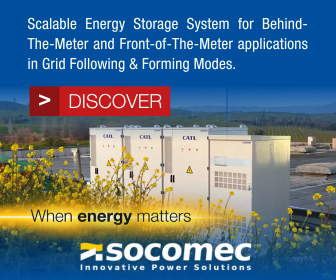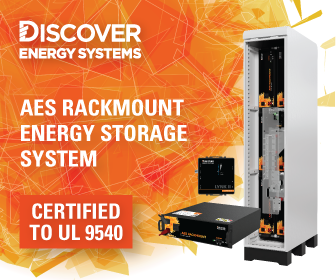Unleashing Potential: Alternate Battery Technologies for Hybrid Power Plants Addressing lithium-ion limitations and fostering collaboration in the energy storage landscape
Amidst the surging demand for clean and renewable energy, hybrid power plants have emerged as a compelling solution, seamlessly blending the forces of wind and solar energy. These plants hold immense promise for sustainable electricity generation.
To truly unlock their potential, it is crucial to harness new and alternative battery technologies to optimize performance and supplant the dependency on lithium-ion batteries, which have limitations like cost, safety, service life, and reliance on critical raw materials. Adopting versatile, longer-lasting battery solutions that leverage non-toxic and non-flammable materials can significantly improve compatibility with renewable sources, accelerating the transition to a system of robust and enduring clean energy infrastructure.
Harnessing wind and sun
Hybrid power plants generate power using wind turbines and solar panels, utilizing the unique characteristics of each source to maximize efficiency. When the wind blows, the turbines generate electricity, while the solar panels produce power when the sun shines.
This combination aims for a continuous and reliable energy supply, mitigating the intermittent nature of renewable sources. Energy generation is enhanced significantly as power plants can tap into the two sources simultaneously, increasing overall energy production. When wind resources are low, solar energy production tends to be higher and vice versa, enabling a more stable output. Hybrid power plants meet peak demand by utilizing wind energy during sunset, reducing the need for costly backup systems.
The U.S. Department of Energy reports that numerous hybrid systems operate independently, functioning off-grid without connection to an electricity distribution network. During periods of low or no wind or solar energy production, these systems rely on batteries and a conventional fuel-powered engine generator for power supply, with the engine generator activating to provide electricity and recharge the batteries in case of battery depletion.
Concerns with lithium-ion
One primary worry with lithium-ion batteries, the most common battery solution for hybrid power plants, is the issue of cost. Their affordability diminishes for durations beyond four hours, and their degradation accelerates the harder they’re used. This means utilities may still need to rely on peaker plants for extended or overnight energy needs, leading to increased operational fees and potential environmental impacts. The inflated cost of using lithium-ion batteries for long-duration storage hinders the efficient integration of renewable energy sources into the power grid, limiting the scalability and cost-effectiveness of hybrid power plants.
Safety is another important issue associated with lithium-ion batteries, particularly in urban areas. Although lithium-ion technology has made significant advancements in safety standards, inherent risks are still involved. In densely populated regions, the potential for thermal runaway, fire, or explosion in lithium-ion batteries can pose substantial dangers. This presents challenges for the widespread adoption of hybrid power plants in urban environments, where safety regulations and public perception play a crucial role.
The dependence on critical raw materials such as lithium and cobalt raises concerns regarding the sustainability and availability of these resources. The high concentration of cobalt mining activities in the Democratic Republic of Congo (DRC) and the heavy reliance on refining in China pose risks to lithium-ion batteries' scalability and long-term viability as the leading energy storage solution for hybrid power plants.

Enhanced storage and sustainability
Researchers are actively developing new battery technologies that offer enhanced energy storage capabilities and safer operation for longer durations. By focusing on alternative chemistries, these advancements aim to address the limitations of lithium-ion batteries, such as cost, safety, and reliance on geographically constrained raw materials. One of the most significant benefits of these innovative technologies is their potential to revolutionize the economics of power plant construction.
Constructing power plants with extended storage capabilities becomes more cost-effective when non-lithium, high-energy battery technologies are employed. These advanced batteries can store more energy for longer, enabling power plants to provide electricity to the grid for extended periods without needing expensive and environmentally impactful fossil fuel generation as backup. This reduction in reliance on backup systems leads to more sustainable energy infrastructure and can likely reduce operational costs in the long run.
Alternative battery technologies are being developed with upgraded safety features that address concerns surrounding battery fires. These advancements mitigate potential risks, thereby improving the long-term resilience of hybrid power plants. Innovators are focusing on new battery solutions with reduced environmental impact, often manufactured using more sustainable and eco-friendly materials, which minimizes carbon emissions and resource consumption throughout their lifecycle.
Promoting cooperation
Bridging the gap between energy storage technology research and development and power plant requirements will require collaboration. Initiatives combining the forces of industry stakeholders, researchers, and policymakers can facilitate knowledge sharing, innovation, and the development of standardized testing and certification processes to validate the effectiveness and reliability of technologies meant for power plants
Government policies and financial incentives play a vital role in supporting the advancement of alternate battery technologies. By offering funding, grants, tax incentives, and regulatory frameworks that encourage the development and deployment of these batteries, governments can accelerate research and development efforts that foster the transition to cleaner energy solutions.
Public-private partnerships are also essential in driving innovation and commercialization, bringing together the expertise and resources of both sectors to tackle technical challenges, scale up production, and reduce costs.
Industry leaders can accelerate the adoption of alternate battery technologies in hybrid power plants by overcoming technological barriers, implementing supportive policies, fostering collaboration, and establishing standardization processes. These advancements will enhance the performance and reliability of renewable energy systems and contribute to the global transition towards a sustainable and resilient energy future.
Mukesh Chatter is the CEO of Alsym Energy, a technology company developing a low-cost, high-performance rechargeable battery chemistry that is free of lithium and cobalt.
Alsym Energy | www.alsym.com
Author: Mukesh Chatter











